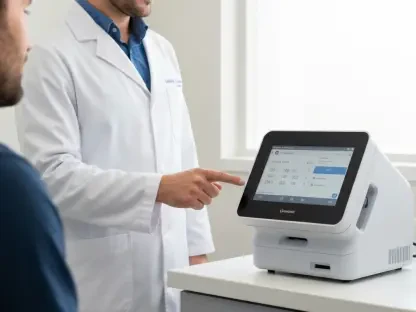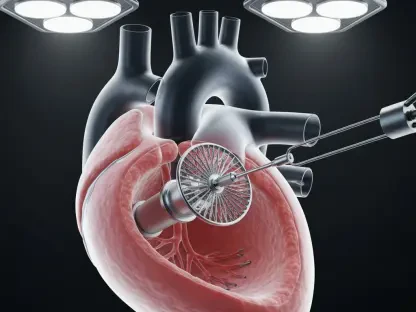In the fast-paced world of medical diagnosis and treatment, the speed at which accurate results are obtained can often be the deciding factor in outcomes. This is especially true in dealing with bacterial infections, where the timely and precise administration of antibiotics is crucial. One area of significant innovation is in antimicrobial susceptibility testing (AST), where advanced techniques are transforming how quickly effective antibiotics can be identified for patient treatment. This is particularly vital in critical cases, such as sepsis, where delaying appropriate antibiotic therapy can have serious, even fatal, consequences. Recognizing this urgency, recent technological advancements are focused on expediting the AST process, offering a glimpse into a future where diagnostics are not only swift but also nuanced and reliable.
The Limitations of Traditional AST Methods
Broth Microdilution Challenges
The current landscape of antimicrobial susceptibility testing primarily relies on the broth microdilution method to determine the minimum inhibitory concentration (MIC) of antibiotics. This conventional approach, though the gold standard, is inherently time-consuming due to its manual framework requiring multiple culturing stages. Each stage is critical to confirm bacterial presence and to reliably test antibiotic efficacy, but this entire process traditionally extends over several days. This delay becomes even more pronounced under emergency conditions, like in intensive care settings, where the rapid identification of effective antibiotics can make a significant difference.
The manual labor involved in traditional AST, coupled with the need for visual inspection and interpretation of results, often leads to variability in outcomes, which could impact treatment decisions. Furthermore, initial treatments using broad-spectrum antibiotics are a necessity due to time constraints inherent in traditional methods. However, this can inadvertently contribute to the rise of antibiotic-resistant bacteria, pressing the need for timely and more accurate diagnostic techniques. The adoption of more rapid technologies thus becomes not only a matter of convenience but a critical step forward in managing bacterial infections efficiently and safely.
Managing Time-Sensitive Conditions
In acute medical cases, particularly those involving aggressive infections like sepsis, the window for effective antibiotic intervention is exceedingly narrow. Traditional AST’s extended timelines could mean patients receive less targeted treatment initially, which potentially exacerbates resistance issues and delays optimal recovery. Health professionals have long expressed concerns over the time delay introduced by these processes, accentuating the dire need for streamlined solutions. The ability to identify the ideal antibiotic in hours instead of days can revolutionize treatment dynamics, directly impacting patient outcomes and treatment efficiency.
These limitations drive the movement towards innovative AST techniques that promise to rectify the bottleneck created by time-intensive manual methodologies. As new technologies come to the forefront, the expectation is that they will address these crucial challenges, providing a pathway to more precise and expedient patient care.
Technological Innovations in AST
Automation Advances
Among the significant advances in AST is the automation of existing processes, notably with systems like bioMérieux’s VITEK®. Initially conceptualized in the 1970s, the VITEK® systems have undergone significant evolutionary enhancements, culminating in sophisticated automated solutions that circumvent the limitations of traditional methods. The automation helps reduce human error by offering more standardized, reliable readings and significantly minimizing the hands-on time required from laboratory personnel. Consequently, these systems have managed to cut down the turnaround time for obtaining MIC results to as little as 5 hours, compared to the traditional 16 to 20 hours.
Modern automated systems operate by employing turbidity-based assessments to trace bacterial growth, allowing for rapid detection and reporting. Although the initial culturing stage remains a prerequisite, automation streamlines subsequent steps, ensuring results are quicker and more precise. These advancements mean that by the time a clinician is ready to proceed with a treatment plan, critical data about the specific pathogens and their susceptibility profiles is reliably in hand, facilitating more informed clinical decisions.
Direct Detection Techniques
Another noteworthy stride in AST advancements is the development of techniques that bypass certain culturing phases entirely, shortening the diagnosis timeline. For instance, bioMérieux’s VITEK® REVEAL™ system is pioneering direct detection from positive blood cultures without needing overnight culturing. This system leverages the analysis of volatile organic compounds (VOCs) emitted by microorganisms, enabling the identification and susceptibility testing of gram-negative bacteria in a significantly expedited manner.
This shift towards direct testing methods underscores a broader trend — the pursuit of reducing the waiting periods between infection identification and treatment administration. These capabilities align with contemporary healthcare priorities, emphasizing reduced patient strain, decreased hospital stays, and overall improved outcome metrics.
Emerging AST Techniques
Resistell’s Innovative Approaches
Emerging AST methodologies are pushing the boundaries of what is technologically feasible in the realm of rapid diagnostics. One significant development comes from Resistell’s Phenotech AST, which employs atomic force microscopy combined with machine learning to assess the susceptibilities of bacterial strains. This technique hinges on detecting the nanomotions of bacteria to judge metabolic activity or inactivity when exposed to antibiotics. The use of cantilevers, which are mechanically displaced by the activity of bacteria, provides a precise readout of the antibiotic’s effect, leading to predictions of resistance or susceptibility with extremely high accuracy rates of up to 98.9%.
By focusing on nanomotion analysis, this method skips some of the conventional steps, offering potentially revolutionary implications for clinical practices. Such an approach is not only fast but integrates seamlessly with the existing infrastructure, offering results in a fraction of the conventional timeline. The solution aims to provide results that are both time-efficient and maintain the meticulous standards necessary for effective patient care.
Microfluidics and Single-Cell Analysis
Johan Elf’s innovative use of microfluidics offers another path forward in AST. This technique allows for the detailed observation of bacterial response at the single-cell level utilizing microfluidic chips equipped with specialized traps that monitor individual bacterial growth patterns microscopically. This cutting-edge solution has demonstrated remarkable speed, delivering AST results in under 30 minutes in cases of urinary tract infections (UTIs) and showing promising expansion towards more complex infections such as bloodstream infections.
Through precise, real-time observation of bacterial behavior under the influence of antibiotics, this approach provides an unprecedented level of detail, resulting in fine-tuned susceptibility assessments. Not only does this method promise speed, but it also maintains the rigorous accuracy essential for clinical acceptance. Such developments are vital in an era where systemic infections present mounting challenges, and the need for rapid, unequivocal diagnostic information becomes ever more crucial.
Integrating Advanced Diagnostics into Clinical Practice
Overcoming Implementation Barriers
Despite the promise shown by advanced AST methodologies, transitioning from promising research to clinical application entails surmounting several barriers. While many systems present groundbreaking capabilities, their integration into routine clinical workflows demands careful consideration of cost, the flexibility of implementation, and logistical feasibility. It is critical for these systems to be economically viable and compatible with the existing clinical infrastructure to facilitate widespread adoption.
Another significant element involves aligning these technologies with current procedural norms, necessitating training and adjustment by healthcare providers. There must also be a seamless communication strategy between microbiologists and clinicians to ensure that rapid susceptibility results translate into quick, actionable insights that inform treatment plans. Further, the balance between adopting cutting-edge phenotypic and genotypic testing also warrants consideration to ensure complementary results in complex diagnostic scenarios.
The Future of AST in Healthcare
The orientation towards rapid, technologically sophisticated AST systems marks a pivotal step in addressing broad healthcare challenges, especially those related to antibiotic resistance. By endorsing enhanced, rapid diagnostics capable of providing clinically relevant results without delay, healthcare systems can achieve more personalized, effective treatment regimens. Moreover, these systems help foster a proactive stance in disease management, significantly impacting antibiotic stewardship programs aimed at reducing misuse and limiting resistance proliferation.
As these innovations integrate more completely into healthcare environments, they are set to not only elevate the precision and accuracy of bacterial infection management but also to lay the groundwork for more responsive, informed medicine. Researchers continue to refine these technologies for expanded efficacy and broader cost-effectiveness. The healthcare community’s anticipatory alignment towards full AST integration underscores a commitment to navigating the ever-evolving landscape of bacterial infections with the aid of technological advancements, providing a clear path forward in the pursuit of smart, sustainable antibiotic stewardship strategies.









